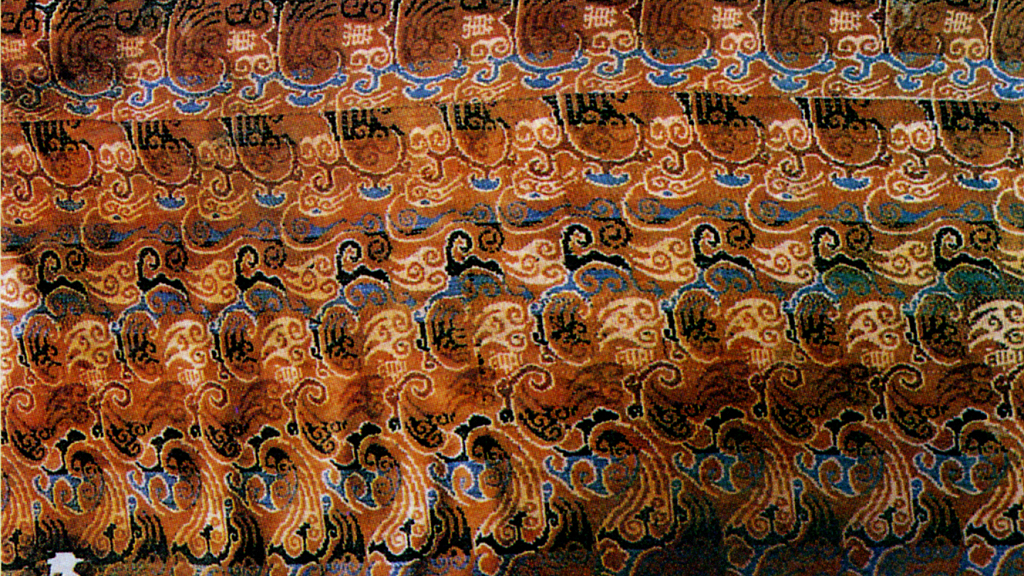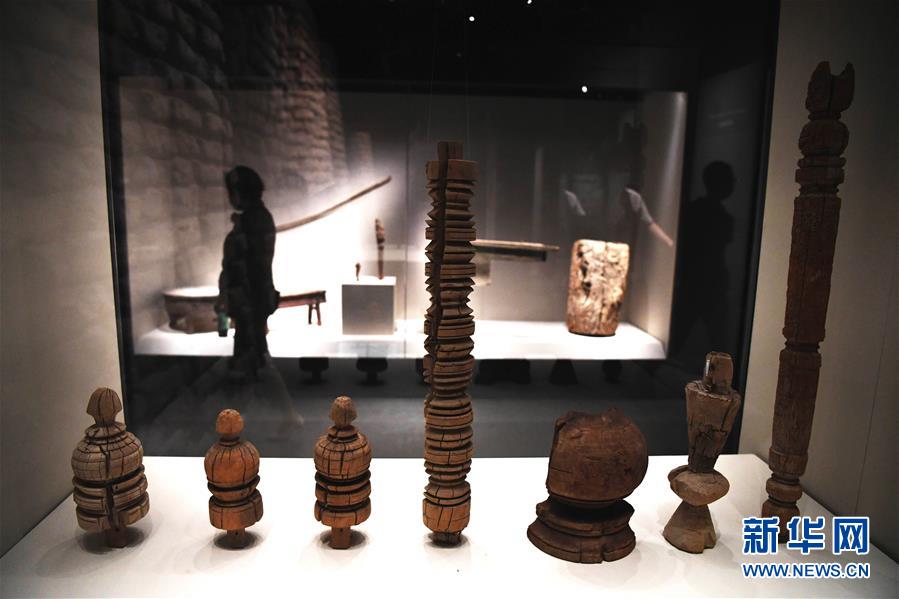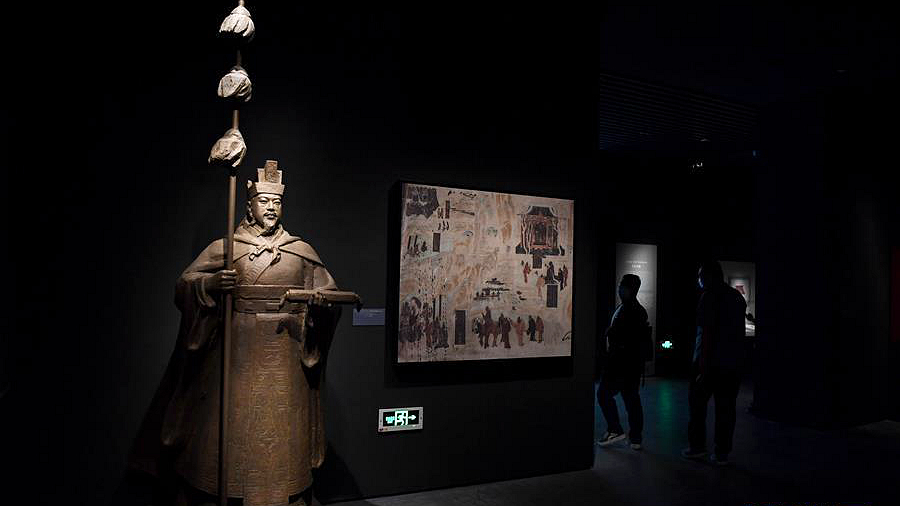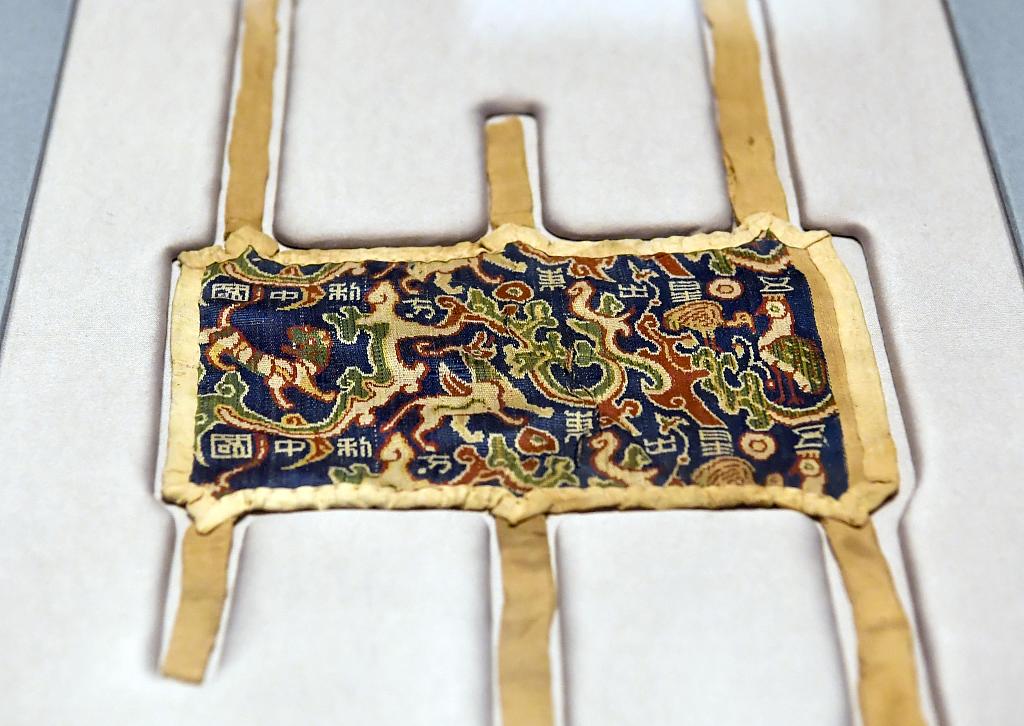
A part of the time-honored national treasure - "Five stars rise in the East" arm protector, which is on display at the Hotan Museum in Hotan Prefecture, northwest China's Xinjiang Uygur Autonomous Region. /VCG
A part of the time-honored national treasure - "Five stars rise in the East" arm protector, which is on display at the Hotan Museum in Hotan Prefecture, northwest China's Xinjiang Uygur Autonomous Region. /VCG
Hotan Museum officially reopened on Monday in Hotan Prefecture, a major oasis town in northwest China's Xinjiang Uygur Autonomous Region, after nearly a year of upgrading and expansion.
The museum held an opening ceremony to mark the 44th International Museum Day on May 18, and launched a special exhibition titled "Five stars rise in the East: Hetan History and Culture Exhibition."
More than 1,300 precious cultural relics were on display at the exhibition, narrating the history of the ancient Silk Road and testifying that Xinjiang has been an inseparable part of China since ancient times.
Lying on the southern edge of the Tarim Basin in Xinjiang, Hotan is a place of long history and strategic importance along the ancient "Jade Road" and "Silk Road," where the Eastern civilization met the Western culture.

Hotan Museum officially reopens in Hotan Prefecture, a major oasis town in northwest China's Xinjiang Uygur Autonomous Region, May 18, 2020. /Xinhua
Hotan Museum officially reopens in Hotan Prefecture, a major oasis town in northwest China's Xinjiang Uygur Autonomous Region, May 18, 2020. /Xinhua
On its opening day, the museum organized various activities, including mobile exhibitions, professional lectures, and performances by representatives and inheritors of intangible cultural heritage.
The upgraded museum consists of seven halls, including the Hotan History and Culture Exhibition Hall, Niya Ruins Special Exhibition Hall, and Cultural and Creative Experience Hall, all opened to public on the same day.
Home to tremendous admirable collections
Former Hotan Culture Center and Cultural Relics Management Office, it is the first museum in the prefecture, housing an 3,272 sets, 9,553 pieces of cultural relics covering a wide variety of categories, including bronze ware, pottery, jade and coins.

The "Five stars rise in the East: Hetan History and Culture Exhibition" is held at Hotan Museum in Hotan Prefecture, northwest China's Xinjiang Uygur Autonomous Region, May 18, 2020. /Xinhua
The "Five stars rise in the East: Hetan History and Culture Exhibition" is held at Hotan Museum in Hotan Prefecture, northwest China's Xinjiang Uygur Autonomous Region, May 18, 2020. /Xinhua
The three-story museum is also home to nearly 2,000 specimens, 800 folk objects and upwards of 660 ancient books. Among all collections is a time-honored national treasure – "Five stars rise in the East" arm protector, which drew crowds to admire its fineness and profound meanings it embraces.
In 1995, archaeologists discovered the brocade armband in a tomb of Niya Ruins in the prefecture's Minfeng County, which was designated as a national treasure shortly after it was unearthed.
Embroidered with eight Chinese characters that literally means "Five stars rise in the East, benefitting China," the brocade was designated one of the cultural relics and forbidden from being exhibited abroad by the Chinese government in 2002.

The time-honored national treasure – "Five stars rise in the East" arm protector – draws crowds to admire its fineness and profound meanings at Hotan Museum in Hotan Prefecture, northwest China's Xinjiang Uygur Autonomous Region. /VCG
The time-honored national treasure – "Five stars rise in the East" arm protector – draws crowds to admire its fineness and profound meanings at Hotan Museum in Hotan Prefecture, northwest China's Xinjiang Uygur Autonomous Region. /VCG
Yu Zhiyong, curator of Hotan Museum in Xinjiang Uygur Autonomous Region, delivered a special lecture in Hotan Museum on the excavation and protection of the cultural treasure as well as the progress in its study.
Hotan Museum was built with assistance from the Beijing Municipality, which is paired with Hotan as per a pairing assistance program initiated in 2010 to support Xinjiang in building new infrastructure and promoting local development.